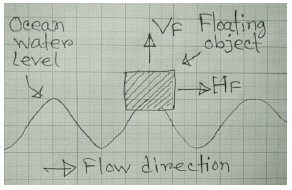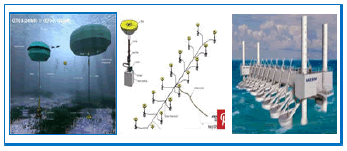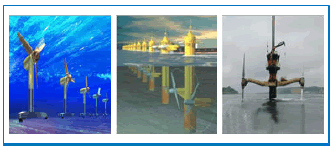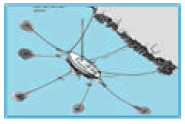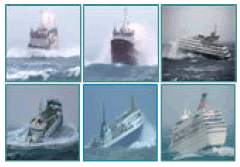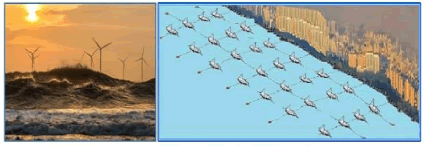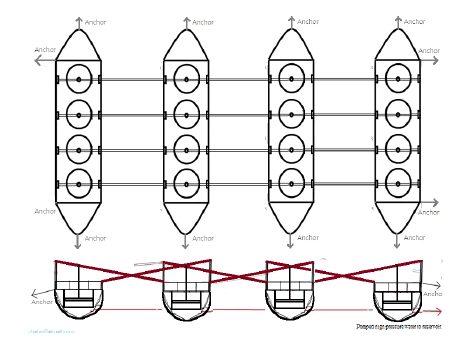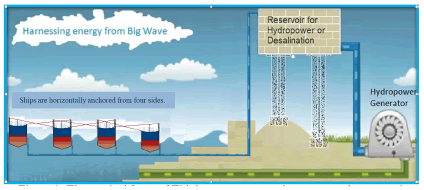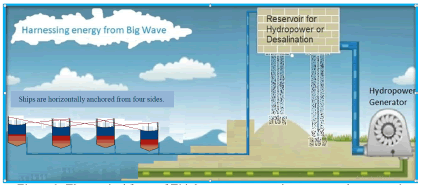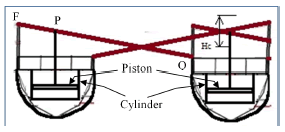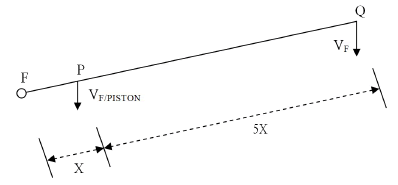Short Communication, J Nucl Ene Sci Power Generat Technol Vol: 11 Issue: 5
Wave Energy: Efficient Conversion of the Big Waves
Moniruzzaman Md*
Executive Engineer, Power Grid Company of Bangladesh (PGCB) Ltd. BSc (EEE)/ DUET, Dhaka, Bangladesh
*Corresponding Author: Md Moniruzzaman, Executive Engineer, Power Grid Company of Bangladesh (PGCB) Ltd. BSc (EEE)/DUET, Dhaka, Bangladesh, E-mail: mmzbabu@gmail.com
Received date: 28 April, 2022, Manuscript No. JNPGT-22- 62048;
Editor assigned date: 02 May, 2022, Pre QC No. JNPGT-22-62048 (PQ);
Reviewed date: 16 May, 2022, QC No. JNPGT-22-62048;
Revised date: 23 May, 2022, Manuscript No. JNPGT-22-62048 (R);
Published date: 30 May, 2022, DOI: 10.4172/ 2325-9809.1000282
Citation: Moniruzzaman M (2022) Wave Energy: Efficient Conversion of the Big Waves. J Nucl Ene Sci Power Generat Technol 11:5.
Abstract
The energy of ocean waves across a large part of the earth is inexhaustible. The whole world will benefit if this endless energy can be used in an easy way. The coastal countries will easily be able to meet their own energy needs. The purpose of this article is to use the infinite energy of the ocean wave in a simple way. i.e. a method of efficient use of wave energy. The paper starts by discussing various forces acting on a floating object. Afterward about the method and then a calculation for a 73.39 MW hydropower from the tidal wave. Used some sketches/pictures. Finally, the conclusion states the possibilities and advantages.
Background: Although the use of ocean waves began in 1799, the inexhaustible source of energy, the "ocean wave" has not yet been put to good use. Most importantly the technological advancement in this matter is really embarrassing. Existing projects are small, critical technology-based and so are not economic. Tidal energy basically is a physical water movement, so compare to solar and wind, harnessing energy from tide should not be so difficult.
Keywords: Anchor; Electricity; Floating object; Pump; Ship city; Wave energy
Introduction
We have seen that an object floating freely on the surface of the ocean, due to the current, oscillates up and down and moves towards the current. So that is
Tidal force on a floating object has two elements:
Horizontal Force (HF): This is a one-directional force created by tidal flow/current.
Vertical Force (VF): This is a bidirectional force created by a tidal wave with gravity. (Figure 1).
Application of Vertical Force (VF) and Horizontal Force (HF): Figure 2a and 2b shows some examples of some existing projects (Figure 2a and Figure 2b).
Description
The value of the horizontal force is much lower than the value of the vertical force caused by the current on an object moving horizontally as it floats up and down in the ocean currents.
Tidal Horizontal Force (HF) (and with other external any kind of wind forces) on a floating object can be opposed by anchoring it properly (by using a minimum of four horizontal/ long-distance anchors) so that the Vertical Force (VF) remains almost the same. This Vertical Force (VF) is useful and it can be very much useful as easily increase this Vertical Force (VF) by increasing the size of the object i.e. by the Archimedes Principle. This bidirectional Vertical Force (VF) is very much suitable for pumping purposes. Therefore, the Vertical Force (VF) of the tidal waves on a floating object can be huge [1].
Method
If we place a ship on the big wave of the ocean and horizontal anchor the ship from four sides then the ship will move vertically with huge energy, we can use that energy for pumping water to the reservoir of the hydropower station and water supply authority.
The movement of this anchored ship (Figure 3) is due to the tidal wave being only vertical and the amount of energy it carries is big [2].
The vertical bidirectional force of this ship can be very useful (Figures 4 and 5).
By installing pumps inside the ship, using the vertical bidirectional force of the wave and gravity on an anchored floating object continuously sufficient water pumping is possible for hydropower station [3,4] and or desalination, as shown in Figures 6-8.
Calculation
Consider a piston-cylinder, diameter Dc=8 m. and cylinder height ≥ maximum wave height. So the cross-section area of the cylinder
Ac= π*(Dc)2/4= π*(8)2/4 m2=50.27 m2 (1)
For wave height is 3 m considering the position of piston, Let, averagely each piston can move 0.5 m. i.e. active length of cylinder Hc = 0.5 m. (Figure 9).
Since the piston will pump in both directions by a wave, so for calculation of the amount of pumped water will be double and so we can say [5,6]. If pistons are connected as like figure-8 then due to one wave the amount of pumped water can be calculated as follows:
For one pump Q1=Ac*Hc*2 per wave=50.27 X 0.5*2 m3/wave= 50.27 m3/wave
If the wave period is 10 seconds, (1)
Then for one piston Q1=50.27 m3/10 sec=5,027 m3/sec
For four ships (four piston/ship) Q=Q1*4* 4=5,03*4*4 m3/ sec=80.43 m3/sec (2)
Consider a floating ship of displacement tonnage 5,000.
(i.e. total weight of the ship is 5,000 ton).
According to Archimedes’ principle, buoyant force (vertical upward force) on the floating ship due to the tidal wave is ≥ 5,000 tonforce, i.e. VF ≥ 5,000 ton-force.
Let, VF=5,000 ton-force=49820.1KN
Because earlier we considered for three-meter wave height the movement of the piston is 0.5 meters i.e. if the vertical movement of Q is 3 meters and of P is 0.5 meters then, the distances shown in Figure 10 should be as like X and 5X.
In figure when Fulcrum point is F, Piston rod connecting point is P, then, for vertical force VF at point Q, the Force at point P will be

If there are four pumps in a ship then averagely, the force acting on a piston should be one-fourth. i.e. VF/PISTON=VF-PISTON/4, Then Pumping pressure on a single piston is

As measured by a U-tube manometer, 1kN/m2 pressure can create a water head 0.102 m.(2)
Then for Pumping pressure P pump=1,486.58 kN/m2, water head
Hhead = 1,486.58*0.102 m = 151.63m
Consider head = 37.63m, then waterfall height, H = 151.63-37.63= 114m.
From formula to calculate hydropower, Generating power (Pgen) (3)
Considering the four ship's (four-piston/ship) water the generating power is
Pgen=Q*ρ*g*H*η watt, (5)
Where, Q=Flow rate in m3/sec. (=80.43 m3/sec eqn (2))
ρ=Water density in kg/m3 (sea water 1020 kg/m3)(4)
g=Acceleration of gravity in m/sec2 (9.81m/sec2)
H=Water fall height in meter. (=114m eqn (4))
η=Global efficiency ratio. {let here 0.8} (Usually between 0.7 and 0.9)
Then eqn (5), Generating power
Pgen=80.43*1020*9.81*(114)*0.8 watt=73392867, watt=73.39 MW
Reservoir size:
We have, Q=80.43 m3/sec,
For 30 min backup operation, Water required will be: VoL=80.43*60*30 m3=144774 m3
If reservoir depth is 3 m then, Reservoir area=144774/3 m2=48254.86 m2,
For square shape area, Reservoir length=width=√48254.86 m=220 m.
Conclusion
Hence, we can conclude that to generate 73.39 MW of electricity from tidal waves we have to anchor four ships (total weight of each ship 5,000 tons) on the ocean where wave height is 3 m, need to build a 220 m*220 m*3 m size reservoir from (114+3)=117 m above the sea level, have to install 16 pumps inside the ships (four pump/ship) of cylinder diameter 8 m, cylinder height ≥ maximum wave height in the installation area and a 73.39 MW water turbine generator.
The Earth is a watery place. About 71% of the Earth's surface is water-covered, and the oceans hold about 96.5% of all Earth's water. Considering the open space available in the ocean, we can easily install the required numbers of ships to the conversion of energy from the big waves to achieve 100% renewable energy.
Advantages:
• Zero emission
• Zero pollution
• Low-cost renewable energy
• Very safe
• Economic
• Easy technology
• Reliable
• Unlimited
• No problem with the conversion of the unsymmetrical wave also
• Reject ships can be used as a floating object that forms a ship city
• Very simple pumping operation, so that the pump can be designed for all sizes of the waves
• Continuous pumping so no need for a big reservoir for hydropower station and or desalination
• Sufficient surface water can avoid the lifting of underground water
***This anchored object method can be used directly in the river for irrigation purposes.
References
- https://www.britannica.com/science/Archimedes-principle
- Wave data (2019) The European Marine Energy Centre Ltd (EMEC).
- The European Marine Energy Centre Ltd
- https://en.wikipedia.org/wiki/Lever
- Power Calculation (2019) Calculation of hydroelectric power and energy principle.
- The Physics Fact book (2002) Density of sea water.
 Spanish
Spanish  Chinese
Chinese  Russian
Russian  German
German  French
French  Japanese
Japanese  Portuguese
Portuguese  Hindi
Hindi 